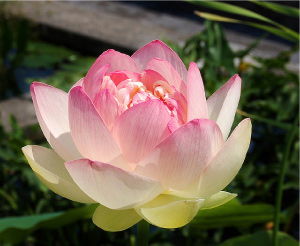Calendar
Discover the Jardin botanique in winter
Activity
Dates
November 13, 2024 to April 30 2025Hours
All Day EventMuseum
Public
For allDid you know that the Jardin botanique de Montréal can be explored in winter too? From November to April, its outdoor gardens are accessible for free during opening hours. Enjoy the 5 km main paved pathway, cleared of snow throughout the cold season, to recharge your energy.
Admire the beauty of the landscape
In winter, the tranquility and beauty of the landscapes make a stroll through the Jardin botanique a revitalizing outing! You can admire the exceptional variety of trees and shrubs visible from the cleared walking paths. To make the most of your visit, read our article on winter at the Jardin botanique.
Observe birds and wildlife
If walkers appreciate the Jardin botanique in winter, so do birds! Numerous bird species find shelter and food in this environment. Eight bird feeders are scattered along the pathway surrounding the garden. You can record your bird sightings on the eBird Quebec portal.
Admire wildlife... from a distance
Several animals live on the grounds of the Jardin botanique. As you stroll through, you might come across foxes, squirrels, and more. It’s best to admire them from a distance and, most importantly, never feed them. Indeed, for hygiene and public health reasons, feeding the animals is prohibited.
Offering food to wild animals can seriously harm their health and lead to undesirable behaviors.
Walk, jog, or ski on designated trails
Whether for fresh air or a workout, everyone can enjoy the Jardin botanique at their own pace. If the surface is slippery, it is recommended to use spikes on the main pathway.
When the snow conditions allow, you can even bring out your cross-country skis to explore the 3 km of marked and groomed trails that wind through the Garden.
The trails of the Jardin botanique connect with those of Maisonneuve Park, where additional trails are available. The best time to ski at the Jardin botanique is a day or two after the last snowfall, to give the crews time to prepare the trails.
Please note, however, that snowshoeing and sledding are prohibited throughout the Jardin botanique.
IMPORTANT REMINDER
Please refrain from walking in the plant beds, off marked trails, or in fenced areas to protect plant specimens and wildlife habitats hidden beneath the snow cover.
Useful information for enjoying a winter stroll at the Jardin
- A map of the garden and a map of the cross-country ski trails are available to help you find your way during your visit.
- Although the greenhouses are closed, lockers and changing rooms remain accessible in the Jardin botanique’s reception centre.
- During the off-season, access to the outdoor site is free. Therefore, booking an online ticket is not necessary to access the outdoor areas of the Jardin botanique.
- Until April 30, the Rosemont and Sherbrooke entrances (near the parking lot) are accessible without an early-bird card starting at 7:30 a.m., except during snow-clearing operations following a snowfall of more than 10 cm. From May 1 to October 31, you can access the garden before opening hours with the early-bird card.
You may also like










